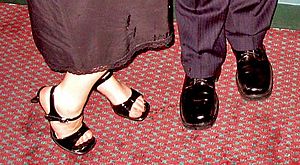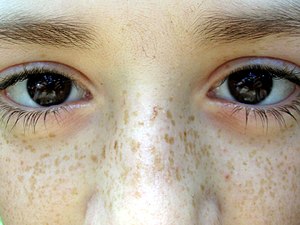 |
| (Photo credit: Wikipedia) |
Following are a few tips for what makes the great pair, and how you can best incorporate them into your wardrobe. Your feet will be grateful if you don’t shirk on the cost. A good pair of shoes will probably cost upwards of $200.00, perhaps a good bit more. Keep in mind though, you get what you pay for, and you should be able to wear these shoes for years, if not decades. If you can only have one pair of dress shoes, go with this:
- Classic, black, glossy leather lace ups
- Leather soles
- Close welt
- Nearly invisible stitching
- Round elongated toe
- Minimum ¼” sole
If you have doubts about your ability to select and purchase a pair of quality leather shoes, shop on a Sunday afternoon, which is the slowest time of the week. Also, get a clerk to help you with the Brannock foot measuring device. This way you are sure to get a good fit and your feet will be grateful. Buy shoes that fit right from the start. If they don’t fit at first, the fit will not improve as time goes by. A pair of shoe trees or shoe savers is a worthwhile added investment. Placed in your shoes as soon as you take them off, they will help maintain the shoe shape and eliminate odors caused by perspiration thereby protecting the longevity of the shoes. Still having doubts? Go ahead, slip out of the sneakers and reinvent yourself by slipping into a pair of classics.
If you a diabetic you will want a softer shoe with cushioned sole and be sure to consult with Dr. Bowman prior to your purchase. You can reach Dr. Jeff Bowman at 713-467-8886 or schedule an online appointment at www.houstonfootspecialists.com.
References:
http://www.kinowear.com/blog/a-simple-guide-on-dress-shoes

















